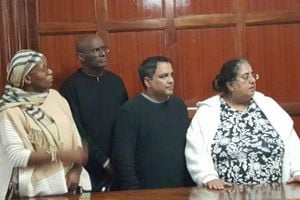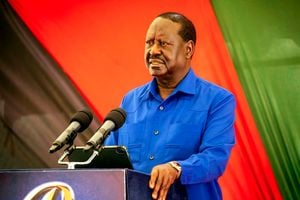Education sector needs more effective oversight to bear fruit
What you need to know:
- For nearly three decades, the country has been grappling with the content, form and process of education without accurately finding the correct mix.
- Cumulatively, there was consistent misadventure in the attempts because attention focused on the structure rather than the content.
- They attempted to reshape the curriculum. However, their findings were hardly implemented. In fact, the Koech Report was rejected.
A cloud of gloom hangs over the education sector because of a planned teachers’ strike that is likely to paralyse learning when schools reopen on Monday.
At the face value, the problem is about a standoff between the government and the unions over a proposed salary package.
But that is the tip of the iceberg. The strike is symptomatic of more fundamental challenges bedevilling the education sector. The first challenge is the type and quality of education offered to our children.
For nearly three decades, the country has been grappling with the content, form and process of education without accurately finding the correct mix.
Between 1988 and 2013, about 10 attempts were made either through presidential commissions or ministerial taskforces to review the education system and deal with the numerous shortcomings. Of critical concern has been that the curriculum is overloaded, not properly segmented and sequenced.
It lacks philosophical underpinning hence the flip-flap attempt to blend practical subjects with theoretical and academic ones.
Two commissions set up over that period worth mentioning were the Presidential Working Party on Education and Manpower for the Next Decade and Beyond chaired by veteran educationist James Kamunge (1988) and Commission of Inquiry into the System of Education of Kenya chaired by Dr Davy Koech (1999).
HARDLY IMPLEMENTED
They attempted to reshape the curriculum. However, their findings were hardly implemented. In fact, the Koech Report was rejected.
Cumulatively, there was consistent misadventure in the attempts because attention focused on the structure rather than the content. Not surprisingly, the perennial debate was whether to continue with the 8-4-4 system that had been introduced in 1985, replace it with another as recommended by the Koech Report or revert to the previous one of 7-4-2-3. No consensus was ever reached and the debate continues.
Inevitably, there is a nexus between structure and content but the best way to deal with the matter is first concretise the content and then prescribe the vehicle to deliver it.
But preoccupation with the system without interrogating what it contains is to miss the point. Education is not about the nomenclature, but the substance and ultimately, the outcome.
Secondly, funding of public education has never been conclusively addressed. Put differently, the resources pumped in public education is negatively skewed in terms of allocations and, therefore, do not give returns.
Education consumes about a third of the national budget, but the bulk of the money goes to pay salaries with little left for learning resources.
Here is the paradox; although staff costs consume the bulk of the Education Ministry budget, which inexorably means that the vote head should be sliced, teachers are among the poorly paid public workers.
FROZE RECRUITMENT
It is for this reason that the government froze teacher recruitment more than a decade ago, resorting to replacing only those who exit through retirement, resignation or death. In itself, that has triggered teacher shortage, currently estimated at about 80,000.
This vexed matter is at the heart of the salary impasse. Notably, the Salaries and Remuneration Commission weighed into the dispute with the advice that giving teachers additional salaries and allowances was unsustainable and would balloon the wage bill.
However, the teachers have argued that other public officers are always treated more charitably than them. For example, MPs have consistently received lucrative pay package as well as those in the mainstream civil service. Why, the teachers posit, is the wage bill argument always thrown at them whenever they ask for better pay.
Another limb to this problem is that resources for free primary and subsidised secondary education are dwindling. On paper, each child in primary school is entitled to Sh1,020 a year while in secondary, the figure is Sh10,265.
In practice, schools hardly receive the full sums of the money. Consequently, programmes such as textbook provision and infrastructure upgrade have stalled.
Third, education sector is facing crisis of policy articulation. All the commissions and taskforces enunciated above have formulated useful policies.
Only recently, a taskforce on secondary school fees presented a report to President Uhuru Kenyatta, which among others, made suggestions on how to lower learning costs.
Instead of taking a comprehensive approach, the ministry only articulated few issues like ban on ranking and left the substance. Failure to pronounce policies in their entirety creates a crisis of vision and direction.
These are just but a few of the challenges, but cumulatively, they have incensed teachers and so when they are denied a higher pay, they easily walk to the street to vocalise their frustrations but create crises in the sector.




